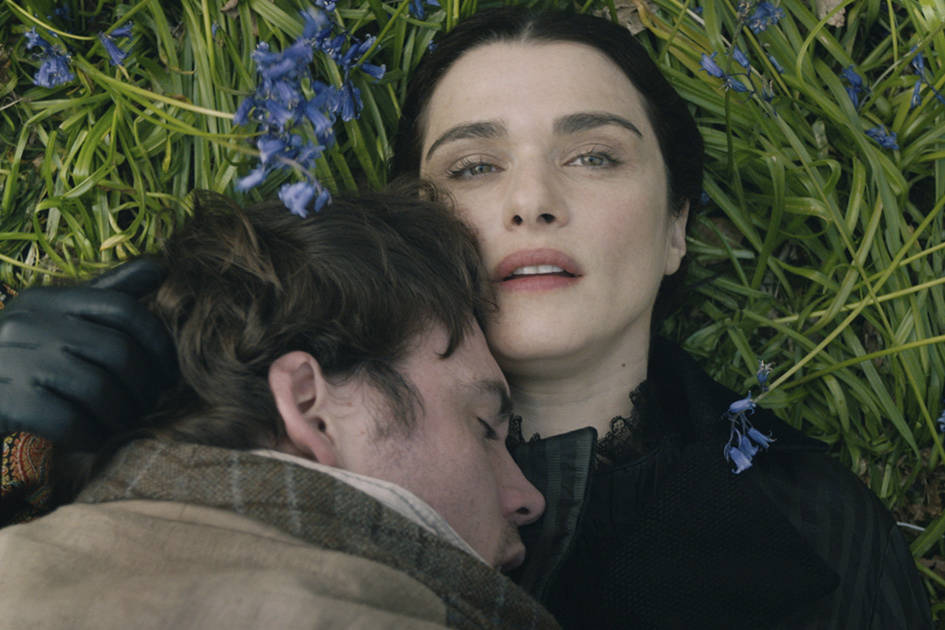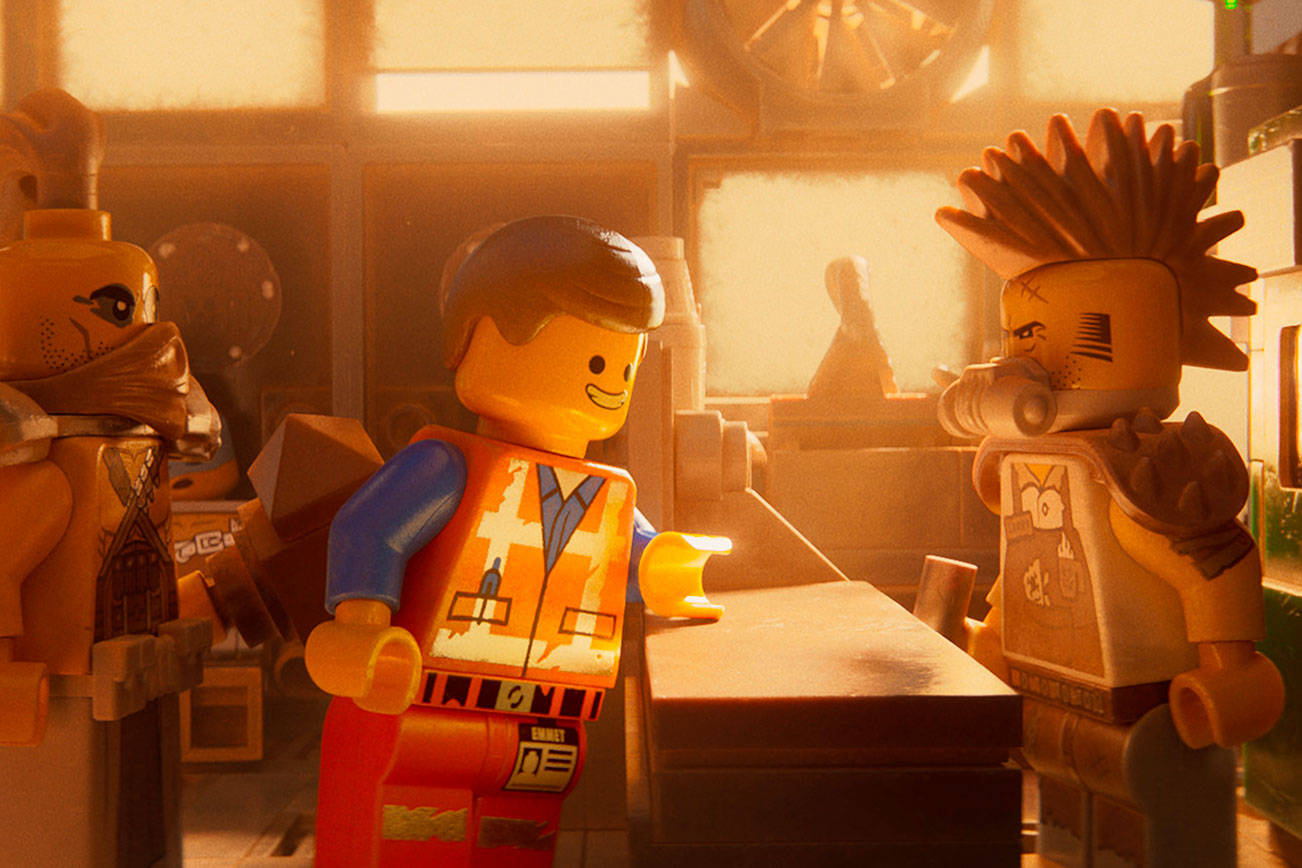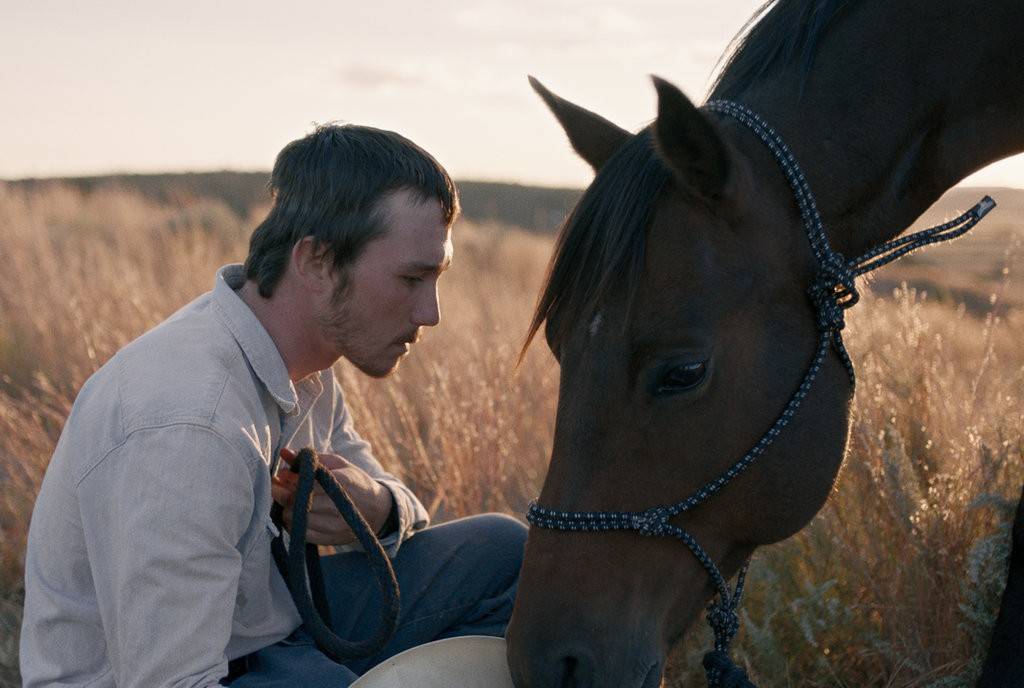Is she or isn’t she? This is the question, and the tantalizing draw, of My Cousin Rachel, a new adaptation of a Daphne du Maurier novel. The story is the sort of genteel-gothic potboiler that du Maurier mastered in Rebecca, and like that novel it features a woman arriving at a mansion where mystery awaits. But this forceful new arrival is far from the meek, unnamed bride of Rebecca—she herself is the source of the mystery.
The story, previously filmed in 1952 with Olivia de Havilland and Richard Burton, is narrated by a young man named Philip (Sam Claflin), who has been raised from his orphaned childhood by his wealthy cousin Ambrose. When Ambrose holidays in Italy and falls for a woman, his letters home give a conflicting portrait of an enchantress and predator. That’s Rachel (Rachel Weisz), a distant cousin to them both. Poor Ambrose never does make it back to England, but Rachel, now his widow, arrives to a deeply suspicious welcome from Philip. In short order, he evolves from hostile skeptic to devoted puppydog, as Rachel brews her exotic Italian teas and works her seductive wiles.
Or are they wiles? Everybody else seems to think so, from Philip’s concerned godfather (Iain Glen) to the pleasant but decidedly non-exotic young woman everybody seems to think Philip will marry. (Holliday Grainger gets a great deal more into this role than you might expect—no simpering spurned fiancée she.) The enjoyment here is sifting through the ambiguity of du Maurier’s setup—because Philip narrates, we never have an objective view of Rachel, whose every smile might be manufactured for effect. And because of Weisz’s skillful performance, we can relish a top-notch actress leading us by the nose much as she bamboozles Philip. This kind of thing might be easier to pull off in a novel, but on film an actress has to present facial expressions and vocal intonations so that they carry multiple possibilities. Claflin, who knocked around in the Hunger Games franchise, does well at suggesting Philip’s impulsiveness, and rather bravely allows himself to look foolish (one can imagine how many image-conscious actors would pass on a role that invites this degree of audience exasperation).
Speaking of the audience, I saw My Cousin Rachel at a preview screening with a full house, and the reaction was audible: derision for lovestruck Philip, scorn for Rachel. It was as though people were primed for a Fatal Attraction-themed amusement-park ride—I almost thought I detected a couple of cries of “Lock her up!” somewhere in the response. The way du Maurier’s story takes ambiguity itself as a subject went a little underappreciated.
To be fair, director Roger Michell (who also scripted) does hint a little in the direction of Rachel-as-black-widow. Michell directed a beautiful adaptation of Jane Austen’s Persuasion in 1995, so he’s at home among candlelit drawing rooms and English propriety, although du Maurier’s story offers gaudier plot turns than Austen would have imagined. It’s not quite true that we get no objective look at Rachel: Michell offers one at a key moment, when she has allowed Philip to expend his ardor while the two of them lie in a field of bluebells. Michell moves in from above to a close-up on her face, and what we see looks grim—surely this is a schemer in the midst of a nefarious plan. On the other hand, maybe it’s a woman disappointed, or humiliated, or resigned. Weisz’s face is actually blank. We project feeling onto it.
However well executed, My Cousin Rachel is basically a chewy exercise in melodrama, but it’s also up to something interesting. The viewer is being set up for a test: Can we accurately read and interpret the clues of a movie, or will we be influenced by rumor, first impressions, and our own prejudices? Most lessons in critical thinking aren’t this much pulpy fun.
My Cousin Rachel, Rated PG-13, Opens Friday June 9 at various theaters.
film@seattleweekly.com






